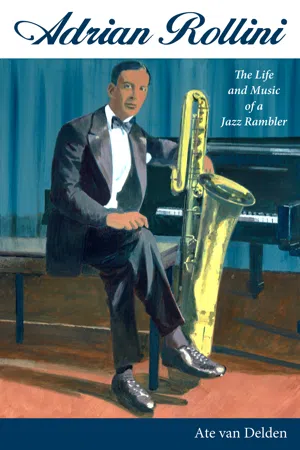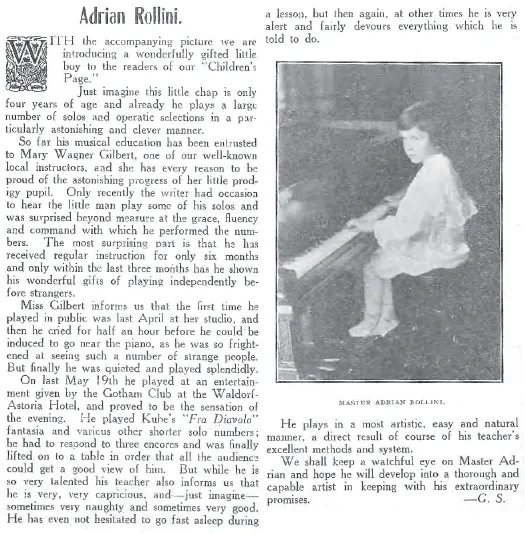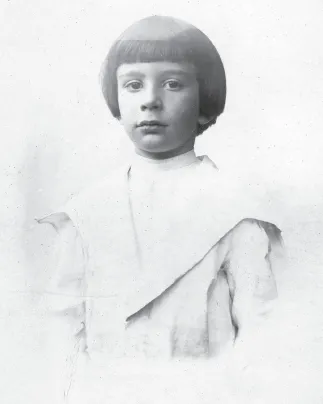![]()
Chapter 1
The First Rollini Generation Arrives in the USA
At the dawn of the twentieth century, Europe’s layout was quite different from what it is today. Most of its peripheral areas had not found its present final shape. Norway was about to split from Sweden, Ireland from the British Empire. The Turks were about to lose the Balkans after ruling there for nearly five hundred years. And usually these changes meant war.
Italy had its share of these wars. It had gone through a long process of unification. After Napoleon had been defeated in 1815, Europe’s layout was once more reshuffled and Italy was left divided. A large part was ruled by the Austrian Habsburg family. Another large part was ruled by the Pope, the Papal States with Rome as its center. It took three Wars of Independence to unify the various parts including the Papal States into one Kingdom of Italy with Rome as its capital.
Other countries were involved in Italy’s growth process. France had gone through a period of revolution and Napoleonic wars, but by the middle of the nineteenth century this had stabilized. Its emperor Napoleon III kept a French garrison in Rome to protect the city and the Pope from being taken by the Italian army. However, he had to withdraw his troops during the Franco-Prussian War of 1870–71. France even asked Italy’s freedom fighter Giuseppe Garibaldi to assist them against Germany. Sometime during this period one of Adrian Rollini’s ancestors, a Frenchman, left his country to settle in Domodossola, in the Piedmont region in northwest Italy. He had been a member of the army of Napoleon I.1 In Italy he used the name Rollini, derived from his French family name.2 He was the first Rollini generation in Italy.3
Out of this French emigrant’s marriage a son was born, Antonio. Around 1860, when he was about twenty-eight years old, Antonio married an Italian lady by the name of Amelia Grimaldi.4 They had two daughters, Luigia, also called Gigia, and Giulia, and one son Ferdinando, the eldest child and born circa 1867 in Campobasso, about fifty miles northeast from Naples. Antonio followed in his father’s footsteps in warfare. He became a member of the Italian army that took Rome (commonly called the “liberation of Rome”) in 1870. For this action and thus for his contribution to the Italian unification he received medals, which in later years he would proudly show.5
Little is known about Antonio’s family life. In addition to his military career he had artistic aspirations and became a painter.6 Thus he was able to give his children a good upbringing. They went to school and had an English-speaking governess. However, the stories of unlimited opportunities in America became stronger and stronger. And by the end of the nineteenth century a flow of emigrants from Italy to the USA literally came under steam. Steamships had taken the place of the earlier sailing ships and presented better facilities for passengers. Son Ferdinando (“Nando” to his family) was the first to try it out.7 In later years his sisters Giulia and Luigia would follow him to the USA and start families. They could speak English when they arrived, but it was with a British accent which they had inherited from their governess.8
Ferdinando Moves to the USA
Ferdinando had received formal training as an engraver and in 1895, aged about thirty, boarded the SS Werra and traveled to New York, to see if the stories about the New World were right. The Werra was built in 1882 in Glasgow, Scotland, and could carry 1,255 passengers.9 During Ferdinando’s trip it carried only 637, including 507 Italians who almost all traveled third class and boarded in Naples. The other nationalities mostly boarded later in Genoa and Gibraltar, Werra’s other ports of call. These were the happy few who nearly all had their own cabins: 107 Americans and twenty-three persons coming from Austria, Germany, Morocco, Spain, Switzerland, and Turkey. The trip offered Ferdinando a possibility to perfect his English. He arrived in New York on 2 September 1895. Like all immigrants he came through Ellis Island. He traveled as third-class passenger 498 and a clerk noted down that he was a twenty-nine-year-old single male and that he had only one piece of luggage. His profession was given as engraver. The professions given for his third-class shipmates read as those of a small village. They were barber, engineer, mason, miller, peasant, shoemaker, smith, stonebreaker, and tailor. On the other hand, the professions of the cabin passengers were generally more on the intellectual side: teachers, an architect, a physician, a lawyer, a surgeon, an artist, a musician and also a US consul.
When Ferdinando arrived in New York, he had a permanent stay in mind, a “protracted sojourn” as said on the Werra’s passenger list. Yet he returned to Italy, maybe for strong family ties. However, New York had convinced him of the great opportunities across the Atlantic. So he returned to the USA.
Ferdinando’s second trip to the USA was on board the SS Trojan Prince, which left Naples on 19 November 1897 and arrived in New York on 6 December. He was passenger 26 on the passenger list, which now gave his age as thirty and his profession as “engraver” again. A special note was made that passenger 26 “is working his passage across to New York as a steward and is on the ship’s articles as such.”
Ferdinando could indeed find a job as an engraver. These were the days before photographic techniques had taken over the graphic side of printing. Magazines and advertising strongly relied on craftsmen to produce illustrations. Ferdinando would develop into one of the best, and the job paid well. On top of that Ferdinando had musical talent. He liked opera and played the piano. This gave him a chance to earn extra money by teaching Italian singing. He advertised as “Signor Rollini” and gave his address as 790 6th Avenue, New York.10 He informed his family about his progress and already in 1898 he had earned enough money to pay for his 64-year old father to visit him in New York. Antonio left from Naples on 20 December 1898 with the SS Trojan Prince and traveled in a more luxurious style than his son had done on the same boat: as a cabin passenger.
Ferdinando Marries Adelina
Ferdinando Rollini was now over thirty years old and found himself in a position to get married and start a family. He met a young lady of Italian descent, Adelina Julia Caroline Augenti, and they married around 1902. She was the daughter of Michael Augenti, a tailor, and Mary Filomena DiLalla. Adelina’s family usually called her Adeline or Adele, and like Ferdinando she was born in Campobasso, Italy, on 28 May 1878. Her family migrated to the USA in the early 1880s. Like the Rollinis they were well-to-do and owned a row of brownstone houses in addition to the house where they lived. Adelina was the eldest of five Augenti children, three of which were born in the USA.
Adelina first went to live with Ferdinando at his address on 6th Avenue, but by 1905 they had moved to a brownstone in Long Island City, Queens, at 323 W. 27th Street.11 From here they could see the Queensboro Bridge, linking Queens and Manhattan.12
Music played a strong role in these families. The Augentis were all musically inclined and this matched well with Ferdinando’s love for music. He sang in church and played piano and guitar. A real Italian who loved opera, he and his young wife went to New York’s Metropolitan Opera to see and hear greats like Enrico Caruso. At this time, the start of the new century, music took a new direction. The Rollinis were to contribute to the new trend in a major way.
Adrian’s birth certificate.
Adrian Rollini Arrives in the Family and at Age Four and a Half Gets His First Piano Lessons
Adrian Rollini was born 28 June 1903 at home, the first child of his parents. He displayed a remarkable musical talent at a tender age. This was discovered after he was given a toy piano for Christmas when he was two and a half years old. Ferdinando and Adelina would sing opera songs at home together and one day they found that little Adrian, in another room, was playing a song along with them.13 Ferdinando detected that Adrian even played the harmony parts as correctly as he could possibly do on his toy piano. And half an hour after he had played on his piano Adrian would hum the songs in the same key. His parents decided that this should be taken seriously and found a piano teacher in New York by the name of Mary Wagner Gilbert.14 She had received piano lessons from the Polish/German pianist Xaver Schwarwenka. In her advertisements she mentioned the basics of her training method: sight reading, ear training, and the Leschetizky Method. Theodor Leschetizky’s piano education method required a thorough technical training and Miss Gilbert’s sight reading and ear training were meant to reach that goal.15 At the time, this method of musical training for children and grownups was new. Today sight reading (also called sight singing) and ear training form the start of many a musical education.16
July 1908 Adrian in the Musical Observer. (courtesy Rob Rothberg)
In November 1907, when Adrian was four years old, Adeline gave birth to their second child, a daughter named Elvira, or Vera for short. Vera had blue eyes, was slightly cross-eyed, and as a youngster was a redhead.17 Two months after Vera’s birth Adrian Rollini got his first piano lessons from Miss Gilbert at four and a half years old. Her studio was at Room 826, Carnegie Hall, New York, but Adrian got his weekly lessons at home in Long Island City. A real piano was acquired and young Adrian still had a long way to grow. He could not reach the piano’s foot pedals because of his short legs, but this problem was solved by father Ferdinando who had the pedals raised. The as yet small size of Adrian’s fingers could not so easily be solved. It could only be compensated by choosing musical pieces that did not require grownup hands. Adrian turned out to have absolute pitch, the rare talent that allows identifying an individual tone without the help of any tool but one’s mind. His progress was such that his teacher wanted others to hear it, so she arranged a public appearance. The first occasion was in April 1908 at her studio in New York. It was no easy task for Miss Gilbert to get him to play. Later she told an editor that “he cried for half an hour” before he could be induced to go near the piano as he was so frightened at seeing “such a number of strange people.” However, finally he quieted and he “played splendidly.”18
Adrian Rollini about five years old.
That editor was Edith L. Winn, author of the children’s page in the Musical Observer, who was present at Rollini’s first real public performance. It took place on Tuesday 19 May 1908 and Miss Gilbert had found an excellent occasion, an evening with the Gotham Club at the Waldorf-Astoria Hotel in New York. This was a culture club, organized in the interest of philanthropy, art, literature, hygiene, music, patriotism, drama, and dancing, led by Mrs. A. Arthur Alfred Brooks, president. It would regularly organize salons at the Waldorf where members and others would present their views or talents. The audience might be about fifty and would be most pleased if an evening were both entertaining and instructive. Young Adrian did not play popular music in today’s sense. His teacher had probably chosen for him and had wisely selected several short solo works. Reviews specifically mentioned the “Fra Diavolo Fantasia,” a work by the German pianist and composer Wilhelm Kuhe (1823–after 1893).19 It was based on the opera Fra Diavolo by the French composer Daniel François Esprit Auber (1782–1871) and consisted of a medley of its music arranged for solo piano. Adrian was the sensation of the evening and had to play three encores. “Miss Gilbert has done wonders with [Adrian] in six months’ tuition.”20 Among his other pieces probably was Frédéric Chopin’s well-known “Minute Waltz,” which is quite suitable to display virtuoso technique.21 After his performance, Adrian was lifted onto a table so that all present could have a good look at the young artist. Mary Gilbert also performed and played Felix Mendelssohn’s “Rondo Capriccioso.” The audience could furthermore listen to Frank Woelber’s violin quartet and to a talk by inventor Hudson Maxim. The Gotham club reached its broad goal that night.
Now that his talent had been recognized by “such a number of strange people,” Adrian would not again be hindered by his initial shyness. He would be meeting new people all his life.
Eventually Adrian Rollini would have eleven years of formal piano studies with a private teacher. At some point Mary Wagner Gilbert was probably replaced by another teacher, maybe because the trip to the Rollini home took too much of her time. Art related that Adrian’s piano teacher was one Madame Negri, who would make a weekly visit for Adrian’s piano lessons.22 Thus he became a fully deve...




